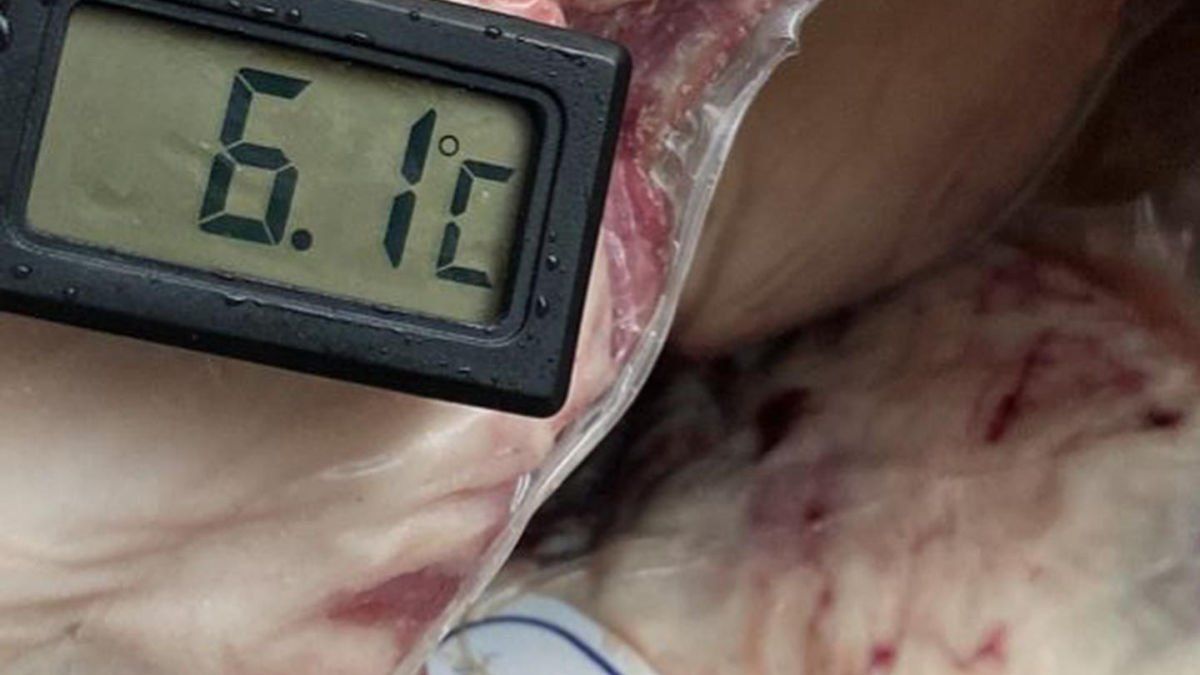For the Government, this measure “represents higher quality and health standards for meat productswhile favoring commercial transparency and presenting progress towards a greater modernization of the chain of distribution of meats in half carcasses”.
Also, look for “make the marketing chain more efficient” and it implies “acting in defense of the consumer”, the intervening portfolios assured at the time, given that “commercializing in half carcasses generates inefficiencies in the allocation of the cuts that affect the price that the latter must pay”.
The entry into force of this measure coincides with the improved meat consumption: according to preliminary statistical data that Ámbito was able to access linked to the livestock business, consumption during the month of August would have increased between 5% and 10%, reaching between 52 and 54 kg/person/year, in a period that was marked by a very high slaughter and stable prices in the gondola. According to different sources consulted by this medium, September would have the same trend and if October shows similar data, the end of 2022 could have better figures compared to 2021. This is framed in a generalized and persistent drop in internal consumption of meat, both due to the cost , change in consumption trends and loss of purchasing power.
Sources of the National Service of Agrifood Health and Quality (Senasa) told Télam that they keep working with the Ministry of Agriculture, Livestock and Fisheries “with regard to progress in the adaptation of refrigerators so that they are in line with the regulations that were issued by the Ministry of Labor, and requested by the International Labor Organization (ILO)”. “In this way progress has been made. Senasa adapted the regulations for the inspection of establishments,” they added.
On the other hand, from Senasa they detailed that “Of the refrigerators that are under the agency’s records, which are those of export and federal transit and that represent 85% of the slaughter in Argentina, 80% already have the item enabled for quartering. The rest is advancing in the adaptation”.
Nevertheless, this initiative generated divisions within the meat sectorsince those refrigerators dedicated mostly to export they assure that the necessary time existed for the establishments to adapt to the new provision and that it will bring two benefits for consumers and workerswhile butchers and suppliers of the domestic market consider that still the conditions are not met to undertake this scheme and predict a rise in prices.
In dialogue with Télam, the president of the Meat Exporters Consortium (ABC), Mario Ravettinomaintained that “the measure is highly positive”, and considered that the marketing of the half carcass is “an archaic and outdated distribution system that only two countries in the world have, which are Paraguay and Argentina. We as an industrial project we cannot continue with the half carcass on our shoulders“.
For Ravettino, “the first beneficiary will be the consumer. Today the half carcass is dragged along the floor of the truck, along the sidewalk, on the walls of the butcher shop with constant cross contamination. We are treating the best meat eater like the worst in the world,” she said.
“In second place, meat will be cheaperbecause by referring the cuts he sells to the butcher, he will be able to offer them at a better price”, while as for the workers, he maintained that will prevent them from “ending up at 45 with irreversible injuriesbecause he is the only one who unloads a hundred half-carcasses per day on his shoulder”.
Finally, although he said that “things are being done so that everyone can follow” the measurecriticized those refrigerators that were not adapted since “they had time to do it and there is no doubt about that, because this was enacted on April 24, 2021, to start on January 1, 2022. Another extension was requested and it went until November. There was more than enough time. If they didn’t want to do it, it’s something elsebut no one can say that it is an untimely, immediate and unrequested measure,” he emphasized.
The meat export is recovering competitiveness: according to INDEC data, in the accumulated from January to August, a total of 596,000 equivalent tons of bone-in beef was exported. Compared to the 538,000 tons exported in the same period last year, current numbers show an increase of close to 11% year-on-year. This growth is largely explained by the recovery in Chinese demand.
For its part, the president of the Chamber of Slaughterers and Suppliers (Camya), Leonardo Rafael, which are the main meat suppliers in the domestic marketcriticized the initiative by assuring that “refrigeration plants are not ready to get that product in pieces as proposed”, and that “there were no credits either as the government said to recondition the plants”.
Furthermore, contrary to what Ravettino said, Raphael maintained that thismakes the product more expensive“Since I know requires “more staff and 48 hours of cold” to be able to carry out the process, for which the plants “do not have the capacity”, for which he hopes that “the work will be delayed and that is an additional cost, which in most plants takes up a day of work”.
That is why Camya requested “a work table with all the actors in the chain to see how all this is going to be implemented. But you have to work seriously, because that way the measure is inapplicable,” Rafael warned.
Although he maintained that he was not against the measure, since “we agree that a person cannot lower a beef measure to the shoulder,” he said that for the time being the use of a mechanical tool could be considered for the half-carcass, as is done with the mochos”, and expressed the need for “financing and time” to implement the chopping.
Source: Ambito
David William is a talented author who has made a name for himself in the world of writing. He is a professional author who writes on a wide range of topics, from general interest to opinion news. David is currently working as a writer at 24 hours worlds where he brings his unique perspective and in-depth research to his articles, making them both informative and engaging.




